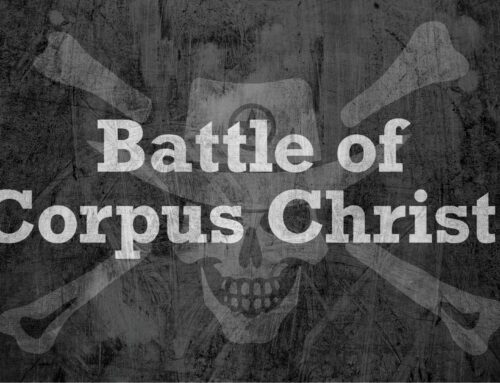Portrait of Mirabeau B. Lamar. Image courtesy of the Texas State Library and Archives Commission. Image available on the Internet and included in accordance with Title 17 U.S.C. Section 107.
Mirabeau B. Lamar: Visionary President of the Republic of Texas
Introduction
Mirabeau B. Lamar, the second president of the Republic of Texas, played a crucial role in shaping the early days of Texas’s independence. Known for his visionary policies, especially in education, Lamar’s presidency left an indelible mark on Texas history. This blog post delves into Lamar’s life, his significant achievements, and his lasting legacy.
3 Facts About Mirabeau B. Lamar
- Second President of Texas: Mirabeau B. Lamar served as the second president of the Republic of Texas from December 10, 1838, to December 13, 1841. His administration focused on strengthening the republic and promoting its cultural and educational development.
- Father of Texas Education: Lamar is often called the “Father of Texas Education” due to his efforts to establish a public education system, including the setting aside of public lands for the support of schools and universities.
- Conflict with Native Americans: Lamar’s presidency was marked by aggressive policies towards Native American tribes in Texas, leading to numerous conflicts and a controversial legacy regarding indigenous relations.
Early Life and Background
Mirabeau Buonaparte Lamar was born on August 16, 1798, in Louisville, Georgia. He grew up in a well-to-do family and received a classical education. Lamar pursued various careers, including journalism and business, before moving to Texas. His diverse experiences and passion for literature and education influenced his later political career.
Family
Mirabeau B. Lamar married Tabitha Jordan on January 1, 1826, but she tragically passed away soon after their marriage. Lamar was deeply affected by her death and did not remarry. He dedicated much of his life to public service and intellectual pursuits, channeling his energies into his vision for Texas.
Key Achievements and Contributions to Texas
Lamar’s presidency saw several key achievements, most notably his efforts to establish a public education system. He set aside public lands to fund schools and universities, laying the groundwork for Texas’s educational infrastructure. Lamar also sought to expand Texas’s borders and strengthen its economy, although his aggressive policies towards Native Americans and Mexico led to significant conflicts.
Impact and Legacy
Mirabeau B. Lamar’s impact on Texas is multifaceted. His contributions to education have earned him a lasting legacy as the “Father of Texas Education.” Despite controversies surrounding his Native American policies, Lamar’s vision for a prosperous and culturally rich Texas continues to be celebrated. His efforts in education have had a lasting impact, shaping the state’s commitment to learning and intellectual growth.
Personal Life and Values
Lamar was known for his intellectual pursuits and love of literature. He valued education, culture, and the arts, which influenced his policies and vision for Texas. Lamar’s dedication to public service and his belief in the importance of a well-educated citizenry were central to his personal and political life.
Challenges and Adversities
Throughout his presidency, Lamar faced numerous challenges, including political opposition and conflicts with Native American tribes. His aggressive stance towards indigenous peoples and Mexico often led to violent confrontations. Despite these adversities, Lamar remained committed to his vision for Texas, navigating these challenges with determination and resilience.
Date of Death
Mirabeau B. Lamar passed away on December 19, 1859, in Richmond, Texas. He died of natural causes, leaving behind a complex legacy. Lamar is buried in Morton Cemetery in Richmond, Texas, where his contributions to the state are commemorated. His death marked the end of a significant chapter in Texas history.
Texas Nexus
Lamar is most closely associated with the city of Austin, Texas, due to his significant contributions to Texas education and governance. As president, he designated Austin as the capital of the Republic of Texas, which remains the state capital today. Austin’s development as a center of education and culture is a testament to Lamar’s enduring influence.
Conclusion
Mirabeau B. Lamar’s life and legacy are integral to the history of the Republic of Texas. His visionary policies, especially in education, and his leadership as the second president helped shape the course of Texas’s development. Lamar’s contributions continue to resonate today, making him a key figure in Texas’s rich historical tapestry.





